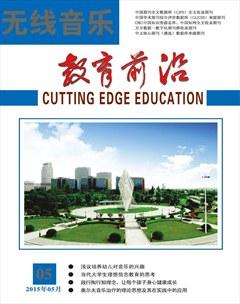Comments on Metaphors and metonymies in New York Times and Times Supplement news headlines
陈伟济
中圖分类号:H315 文献标识码:A 文章编号:1672-8882(2015)05-0100-01
Metaphors and metonymies in New York Times and Times Supplement news headlines is written by Jian-Shiung Shie (谢健雄), a professor of linguistics at Wenzao Ursuline College of Languages, Kaoshiung, Taiwan, China. It addresses the cognitive, pragmatic, and rhetorical roles of conceptual metaphors and metonymies in TS and NYT headlines, focusing on variations in non-lexicalized metaphors and metonymies. It is structured by four sections, namely, introduction, data and methodological procedure, non-lexicalized metaphors and metonymies in the headlines and concluding remarks. Comments are to be made mainly on the abstract, introduction, discussion of the results and the concluding remarks.
The abstract is beautiful. Its well-structured, precise and clear. The first two sentences indicate the research background, telling us what the research is about (move 1). The third sentence is about the research purpose (move 2). And then the methodologies (textual survey and stylistic analysis) are introduced in the following sentence (move 3). Sentence five is the findings (move 4), and the following three sentences tell the chief conclusions (move 5). The language applied by the author in the abstract is appropriate. Except for the third sentence, present tense is used. And the use of impersonal passive is easy to be identified.
The introduction is also well-structured and clear. Paragraph one to four establishes the research territory by introducing the research topic and appealing to the readership (“This paper is concerned with the stylistic variations between the TS and NYT headlines in the use of non-lexicalized conceptual metaphors and metonymies”). Paragraph five establishes a niche by indicating a search gap (“Little work is available which focuses on comparing journalistic discourse in different varieties of English across cultures.”). Paragraph six occupies the niche by putting forward the hypothesis and outlining purpose (“It is thus hypothesized that fewer non-lexicalized metaphors and metonymies are used in TS headlines than in their corresponding NYT headlines in order to increase the accessibility of TS headlines to general TS readers.” “In addition, a stylistic analysis has been performed to explore the variations between the NYT and TS headlines in the cognitive, pragmatic, and rhetorical roles of non-lexicalized metaphors and metonymies.”). And the last paragraph indicates the importance of the paper.
The literature review is “hidden” in the thesis rather than placed in a discreet section. The majority of the literature review can be fond in section 3.1. It is idea-driven and examples of conceptual metaphor and metonymy are provided (e.g., “A is used to stand for B for some purpose in some context, as is the case with the common metonymical expression White House, where the vehicle concept is ‘the official residence of the U.S. President, standing for the target concept ‘the authorities working in the official residence of the U.S. President.”).
Section 3.2 presents the results of the textual survey and explores variations in non-lexicalized conceptual metaphors and metonymies between TS and NYT headlines. I like the discussion of the result so much. The author does not repeat the data in words. Instead, he gives his judgments (“The figures in Table 5 indicate that non-lexicalized metaphors and metonymies frequently arise in the sub-corpus of NYT and TS headlines. A total of 482 instances of non-lexicalized metaphoric and metonymic headlines have been found in the 525 pairs of corresponding headlines for the present study. In addition, fewer TS headlines than NYT headlines have been found to have a non-lexicalized figure of speech in question. The degree of non-lexicalized figurations is thus reduced mildly to make TS headlines more accessible to general TS readers.”). The author also gives explanation for the results (“In 39 pairs of headlines only the NYT headline is metonymic, while in 25 pairs only the TS headline is metonymic. The lesser variation in the use of metonymy can be accounted for by the fact that, as Lakoff and Johnson (1980:39) put it, ‘‘the grounding of metonymic concepts is in general more obvious than is the case with metaphoric concepts, since it usually involves direct physical or causal associations. The higher accessibility of metonymic concepts, such as those derived from part-whole and effect-cause correlatives, leads to the less frequent cases of variation from metonymic NYT headlines to their corresponding non-metonymic TS headlines.”) In section 3.3, nine cases of non-lexicalized metaphors and metonymies in the sub-corpus are studied and their cognitive operation, pragmatic motivation, and stylistic consideration in context are discussed. After the careful discussion, he put forward his conclusions that are quite convincing.
There are three paragraphs in the concluding remarks. The first paragraph is a generation of the research purpose and methodology. The second paragraph is the finding of textual survey, answering the hypothesis put forward in the introduction, while the third paragraph is the conclusions found in the stylistic analysis. The concluding remarks is short but clear. However, the limitation and implication are not mentioned. I think it would be better to include both of them.
References:
[1] Jian-Shiung Shie Metaphors and metonymies in New York Times and Times Supplement news headlines. Proceedings of the Twenty-Fourth Conference on Computational Linguistics and Speech Processing (ROCLING 2012)
[2] Fuller, J., and Gundel, K. (1987). Topic-prominence in interlanguage. Language Learning, 37, 1-18.

